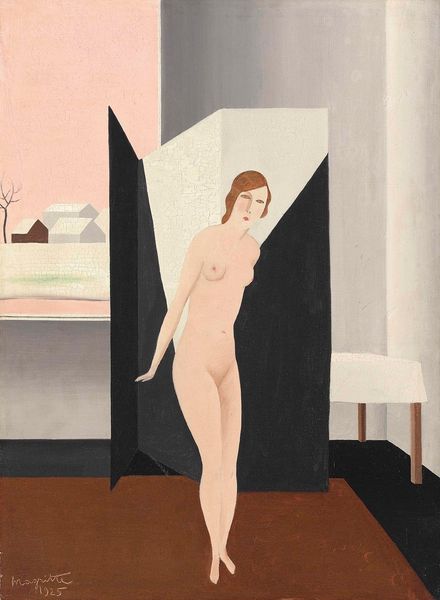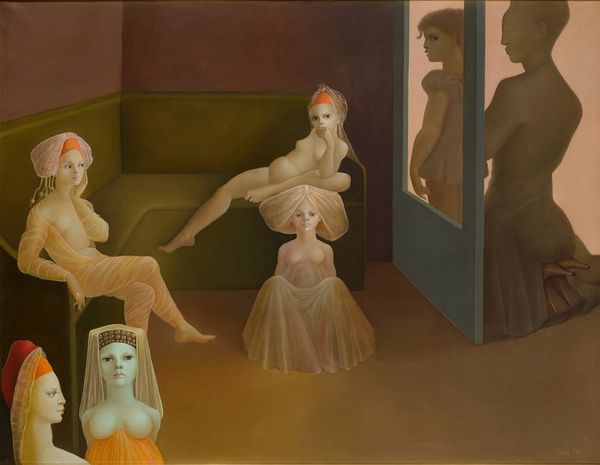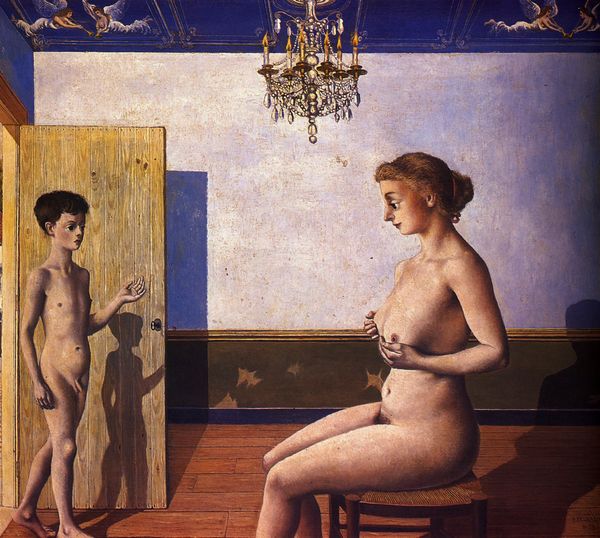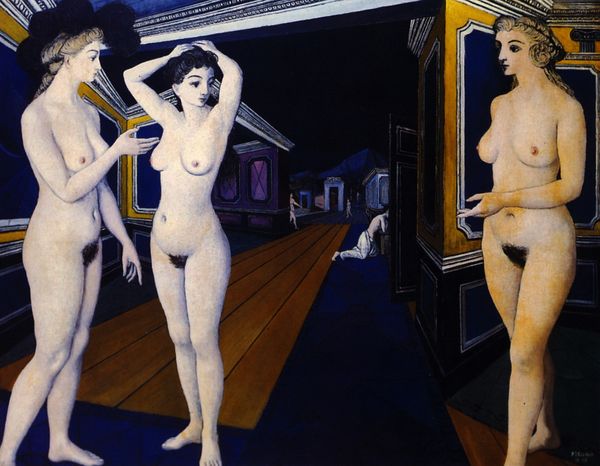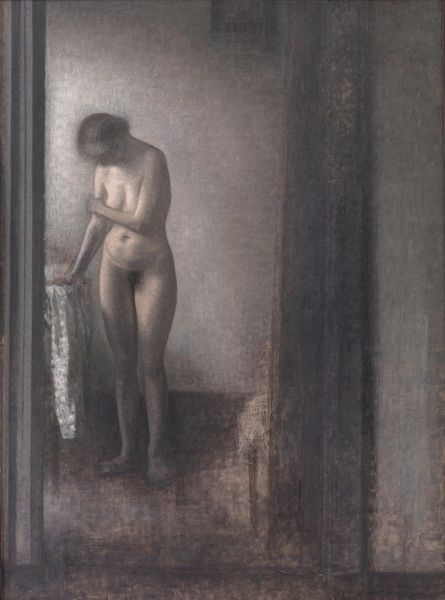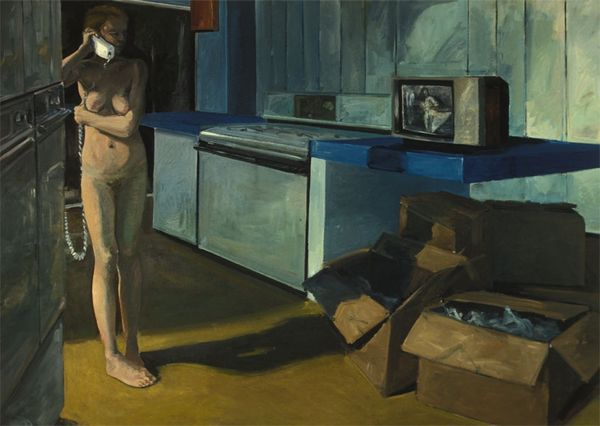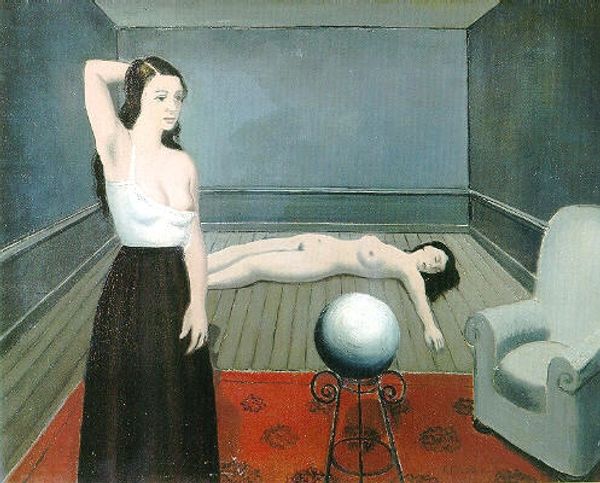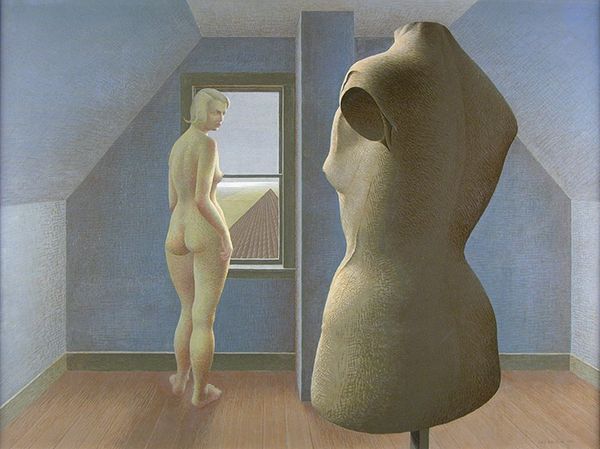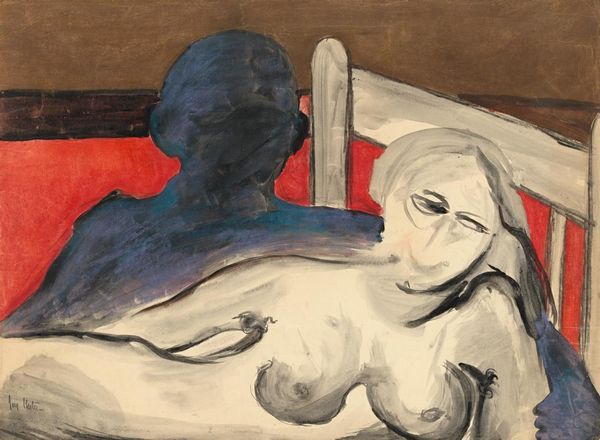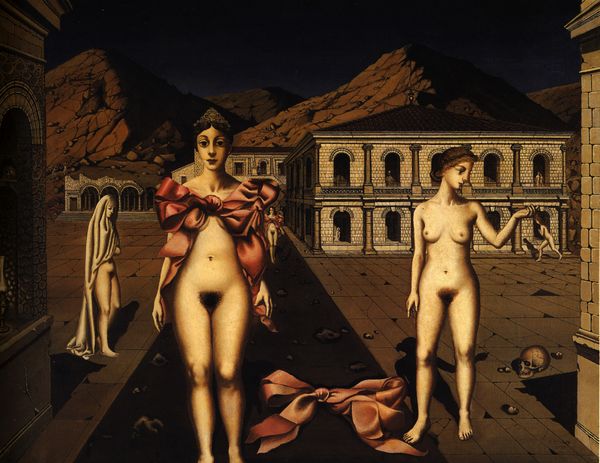
painting, oil-paint
#
portrait
#
painting
#
oil-paint
#
furniture
#
figuration
#
female-nude
#
nude
#
surrealism
Dimensions: 60 x 80 cm
Copyright: Paul Delvaux,Fair Use
Editor: Paul Delvaux's "The Screen," painted in 1935, offers a strangely unsettling scene. There's a stillness, an almost frozen quality to the figures. How do you interpret this work and the quiet drama it seems to convey? Curator: This piece invites us to think about the female body and its representation within art history. Delvaux places a nude woman in what appears to be an intimate setting, yet she seems strangely disconnected, almost like a mannequin. What does it mean to depict a nude woman so devoid of apparent emotion, standing almost passively next to what looks like a discarded garment? Is she empowered, or merely an object? Editor: I hadn't considered that. It feels like he's deliberately disrupting the male gaze by stripping it of any real intimacy or connection. Curator: Exactly. Consider also the screen itself – a barrier, a divider, perhaps even a commentary on the hidden desires and unspoken anxieties prevalent during the interwar period. Who is hiding behind it, and what are they looking at? Is it protection or performance? Are the genders relating? What do these dynamics suggest about power structures within interpersonal relationships? Editor: The screen definitely adds a layer of voyeurism and distance. It complicates the narrative, making you question who is looking at whom, and what exactly is being concealed. Curator: And how does that affect our interpretation of the female figure and the male figure? It's about more than just the literal image, it's about power, gaze, identity, and the social and political anxieties that might be simmering beneath the surface. These Surrealist pieces are less dreamy and more of a mirror, forcing us to reckon with discomforting elements. Editor: That's fascinating. I'll never look at this piece the same way again! It's much more complex and thought-provoking than I initially realised. Curator: Precisely. By considering the social, historical and theoretical contexts, the piece can open up new pathways of questioning around female representation.
Comments
No comments
Be the first to comment and join the conversation on the ultimate creative platform.
